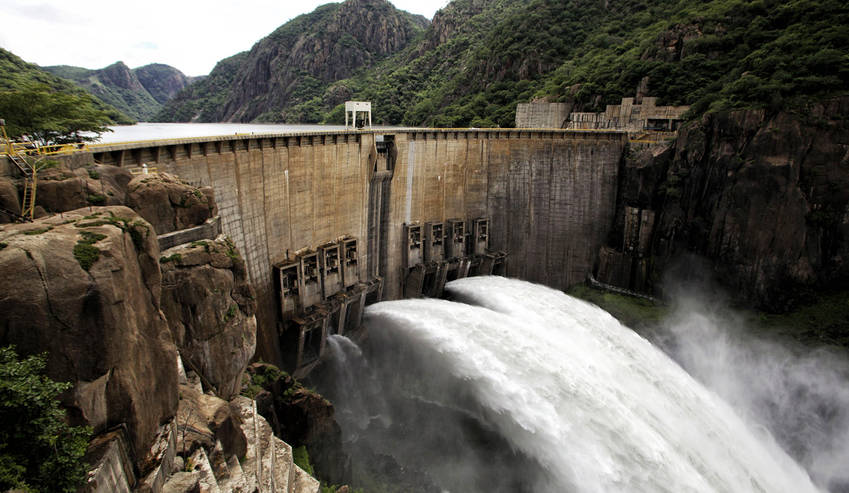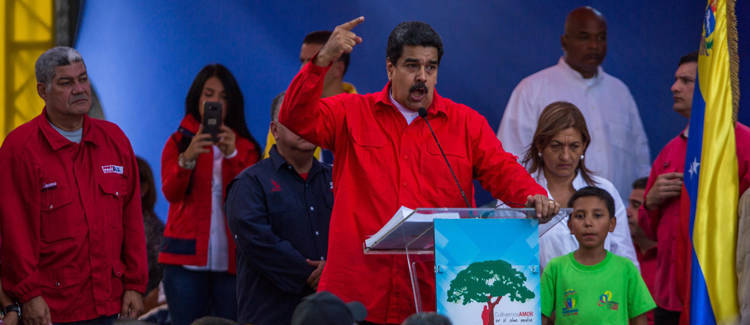News
Cahora Bassa: The Intersection of Politics, Economics and Engineering
The original construction involved five countries (SA, Mozambique, Malawi, Zambia and Zimbabwe) and 15 companies. Today the management of the Zambezi is entrusted to Zamcom, involving Zimbabwe, Zambia and Mozambique.

The only thing missing was James Bond abseiling down the side of the giant generator hall.
Amazing is an overused word. But Cahora Bassa is an amazing feat of engineering. In 1969 when it was started it was one of the five biggest dams in the world, with the largest unit generating capacity. Simply incredible describes the feat of logistics to build it down from the Songo plateau in such a remote place on the Zambezi, 700km from the coast at Beira, from where the inputs for 500,000 cubic metres of concrete among much else had to be dragged. It’s not clear to me whether too many construction companies, save the Chinese, have the chutzpah and staying power to take on such a job today.
Little wonder that “Cahora Bassa” means “the job is finished” in the local Nhungwe dialect.
The road from Songo winds 600 metres down to the dam wall, 171 metres high, 23 wide at its base. The top of the five Siemens generators, each 415MW, fill the 300-metre length of the turbine hall, reaching 60 metres, or six storeys, down into the solid rock. The water is passed from the lake, all 2,700 km2 of it stretching 250kms towards Zimbabwe, through 9-metre inlets, spinning the turbines and then the generators at 107rpm, sending power via transformers to a sub-station in Songo, from where two-thirds is converted to DC (direct current) for the 1,500kms to the Apollo sub-station near Pretoria where it is fed into the South African grid. The remaining 300 MW or so is distributed in Mozambique.
It’s an example of what co-operation can achieve. The original construction involved five countries (SA, Mozambique, Malawi, Zambia and Zimbabwe) and 15 companies. Today the management of the Zambezi is entrusted to Zamcom, involving Zimbabwe, Zambia and Mozambique. Cahora Bassa has also, since 2007, been majority Mozambique-owned, the result of a deal struck with Portugal in 2007 and involving Maputo paying off $800-million in debt, which it has cleared in 10 years.
But its history also illustrates what happens when things go wrong. Although it was first turned on in March 1977, nearly two years after Mozambique’s independence from Portugal, and by 1980 was supplying energy to South Africa, sabotage of the power lines quickly brought transmission to a halt. Although Maputo and Pretoria signed the Nkomati Accord in 1984 and the Cape Town Tripartite Agreement the following year, by 1986 no less than 524 pylons had been dropped by SA-sponsored Renamo. It was only after the civil war in Mozambique ended in 1992 and elections were staged two years later that rehabilitation could start. Cahora Bassa resumed operations in 1997, and exports to SA the following year.
Cahora Bassa transforms water into power. Managing the substance of the business – water – has become a critical issue. Water inflows have been poor for the last few years due to drought conditions, while Zambia has managed the Zambezi erratically, with continuous use of Kariba’s turbines in 2015 resulting in water levels in that dam falling to a low of 15%. Zambia as a consequence has had to import very expensive power from barges moored off the Mozambique coast, along with power from elsewhere in the region, leaving a trail of bad debt in the process.
Maintenance of these levels is the daily fascination of the local hydrologists at Cahora Bassa. As a result of the drought, water levels have fallen to seven metres below their optimum level at Cahora Bassa, and the dam is around 70% full at the end of this rainy season. One of the five generators is idle for this reason.
Mozambique has a remarkable potential to export energy to the region. Cahora Bassa is in the throes of a $500-million modernisation programme. There is also a plan to build a new 1,500 MW plant at Mbhanda Nkuwa, 60km downstream. This will cost an estimated $2-billion.
In an era when, after independence in 1975, even the barber shops were nationalised and the fascination with Marxism-Leninism peaked, it was a shrewd move to leave Cahora Bassa’s ownership in the hands of the Portuguese, ensuring that no scorched earth practices were practised and that the former colonial power had a considerable stake in its former colony’s success. Today HCB (Hidroeléctrica de Cahora Bassa) contributes $25-million monthly in foreign earnings and considerable taxes and concession fees, ensuring that it remains prudently and profitably managed. In 2017 HCB recorded a profit of R1.8-billion from revenues of R3.2-billion. This demands operating “with the head and not with the heart”, says the HCB chairman, Dr Pedro Couto.
This business model requires the acceptance that electricity is not a free service, but a tradable commodity. This is not an easy message in a country where more than half of its 30 million citizens remain mired in poverty, and where the electricity penetration is under 30%.
The James Bond setting was perfectly illuminated by the backdrop of solid rock framed by enormous concrete beams, above them 50-tonne yellow painted cranes. But there were no explosions or crashing beams, just the steady hum of the four turbines. And somewhere in South Africa a light-switch, oven, computer or fridge was flicked on with Mozambican power.
Regional integration is a synonym for talk shops, protocols, blah-blah and pooh-bahs. The message from Cahora Bassa is: it can deliver at the intersection of politics, economics and engineering.
The article was first published on The Daily Maverick.



